Few places in our world are more educational than museums. After all, where else could we hope to see so many pieces of actual history that tell so many stories about our ancestors? From prehistoric spears to Egyptian mummies, from ancient Greek sculptures to medieval armor, and from the first radio to to the first planes used in war during WWI, museums have it all. Unfortunately, there are millions of people with direct access to museums that have never even visited one. There are many possible reasons for this–perhaps they think just looking at old things would be boring, or perhaps they are unaware just how different the world was in the past and see no reason to take interest. Whatever the reason for not taking advantage of the incredible amount of tangible knowledge museums offer, and regardless of age, Museum Day is the time to invest in education in its most fascinating form.
The International Council of Museums (ICOM) created International Museum Day in 1977. The organisation chooses a different theme for the day and coordinates every year. Some of the themes include globalization, indigenous peoples, brigding culture gaps and caring for the environment. Every year since 1977, all of the museums in the world are invited to participate in this day to promote the role of museums around in the world, by organizing enjoyable and free activities around the year’s theme. International Museum Day has become steadily more popular since its creation, with International Museum Day 2009 being participated in by 20,000 museums in over 90 countries. In 2012, the number of participating museums had jumped to 30,000 in 129 countries.
Museum Day is an increasingly popular worldwide event, so it is quite probably that many of the larger and better known museums will be pretty crowded on this day, especially since many museums do not charge an entrance fee then. If you do not feel like standing in long lines to see every single thing or having to maneuver your way through crowds of people, paying more attention to not stepping on anyone’s shoes than the objects on exhibition, you may want to visit the museum of your choice a few days before or after Museum Day. On weekdays, museums are often quiet places where one can come to study our ancestors’ lifestyles and contemplate what motivated them to behave and develop as they did. However you decide to celebrate Museum day, don’t let this opportunity to find out about the history of the human race go to waste!
Metropolitan Museum of Art, New York City

Word of the Day
| |||
| Definition: | (adjective) Marked by intellectual productivity. | ||
| Synonyms: | prolific, fertile | ||
| Usage: | He had a fecund imagination and wrote four novels in two years. | ||
U.S. Capitol, Washington, D.C.

Idiom of the Day
final cut— The completed and finalized edited version of a film, as authorized by its director and producer. |
The Indian Museum, India

History
| |||
 | Reaching 27,890 ft (8,501 m), Lhotse is the fourth highest mountain on Earth. Tibetan for "south peak," it is located in the Himalayas on the Nepal-Tibet border and is connected to Mount Everest by a 25,000-ft (7,620-m) ridge. The first ascent of the mountain was made by Swiss climbers Fritz Luchsinger and Ernest Reiss in 1956. | ||
| |||
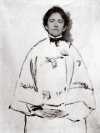 | Käsebier was one of the most influential American photographers of the early 20th century and a promoter of photography as a career for women. She photographed famous figures like the sculptor Auguste Rodin and American showman Buffalo Bill, but she is best known for her evocative images of motherhood and portraits of Native Americans. In 1899, Alfred Stieglitz declared her "the leading artistic portrait photographer of the day." | ||
| |||
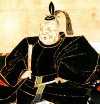 | This festival provides the most spectacular display of ancient samurai costumes and weaponry in Japan. The Toshogu Shrine, in Nikko, Tochigi Prefecture, was built in 1617 to house the mausoleum of Tokugawa Ieyasu (1543-1616), the first of the Tokugawa shoguns. On the first day of the festival, dignitaries and members of the Tokugawa family make offerings to the deities of the shrine, and warriors on horseback shoot at targets with bows and arrows. The next morning, more than 1,000 people take part in the procession from Toshogu to Futarasan Shrine, including hundreds of samurai warriors. | ||
| |||
| A mother's voice may do far more than soothe her child, new research suggests. When moms spoke, several areas of their children's brains were activated, the researchers reported. | |||
1798 - The first Secretary of the U.S. Navy was appointed. He was Benjamin Stoddert.
1949 - Antiquarian Booksellers Association of America was incorporated
1951 - The United Nations moved its headquarters to New York City.
1953 - The first woman to fly faster than the speed of sound, Jacqueline Cochran, piloted an F-86 Sabrejet over California at an average speed of 652.337 miles-per-hour.
1980 - Mt. Saint Helens erupted in Washington state. 57 people were killed and 3 billion in damage was done
2012 - Facebook Inc. 2012 - Facebook held its initial public offering and began trading on the NASDAQ. The company was valued at $104 billion making it the largest valuation to date for a newly listed public company.

DAILY SQU-EEK

If You Were Born Today, May 18
While you are sociable and confident, you have a spiritual side and a strong need for privacy. You are creative, unusual, passionate, and a tad mysterious, but ultimately very reliable and trustworthy. You possess tremendous business sense, and the determination to go after what you want. You are imaginative and know how to use your imagination in the business world. Famous people born today: Perry Como, Tina Fey, Frank Capra, Reggie Jackson, Chow Yun-Fat.

| Picture of the day | |
 |
The Samyang 14mm f/2.8 IF ED UMC Aspherical is an ultra wide angle prime lens produced by Samyang Optics for the
35 mm film format. Released in 2009 as a replacement for the short-lived Samyang 14mm f/2.8 IF ED MC Aspherical, this manual focus-only lens has an aperture ring which manually adjusts the aperture with half-stop clicks.
|

Light Conversation
Photograph by Martin Bagg, National Geographic
Two women in Hoi An, Vietnam, pass the time at a lantern shop. The old waterfront town was an active Southeast Asian trading port dating back to the 15th century and is now recognized as a UNESCO World Heritage site. “The colored lanterns abound in the Old Quarter,” Martin Bagg writes. “At night they make it a visually stunning place [in which] to walk around.”
Denver Art Museum from Daniel Libeskind

knit
knit
knit
knit
knit
Jewish Museum, Munich, Germany

crochet
crochet
crochet
crochet

crochet

The Imperial War Museum, London

RECIPE
Smithsonian Institution, Washington, D.C.

CROCKPOT RECIPE
thanks, shelley

Art Museum of Catalonia, Barcelona, Spain

SWEETS
Microwave Caramels in 6-Minutes

Author: Little Spice Jar
Serves: 30-40 (depending on how small you cut them)
Easy 6-Minute Microwave Caramels. These sweet little caramel chews are sprinkled with sea salt and have the most delicious salty-sweet flavor and are perfect for gift giving during the holidays!
Ingredients
- ½ cup light corn syrup (or golden syrup)
- 6 tablespoons melted butter
- ½ cup condensed milk
- ½ cup granulated sugar
- ½ cup light brown sugar
- ¼ teaspoon sea salt (plus more for sprinkling on top)
- ½ teaspoon vanilla extract
Instructions
- First, check the wattage on your microwave. This is usually on a label on the inside of your microwave door, near the serial number. This will tell us exactly how long you will need to microwave your caramels for. For 1000W microwave, it will take 6 minutes, for 800W it will take 8 minutes and for 600-700W it will take about 9-10 minutes.
- Line a 8x8 baking dish with parchment paper. To keep the parchment paper from moving around, I used binder clips to hold it in place. Spray the parchment paper with cooking spray, set aside.
- Combine all the ingredients in a microwave-safe bowl and stir. Microwave the mixture for the required amount of time (see step 1), stopping every 2 minutes and stirring.
- Remove the bowl carefully as it will be hot, pour the caramel mixture into the prepared baking dish, and spread the caramel into an even layer using a rubber spatula. Sprinkle with additional sea salt, if desired. Allow the caramel to cool in the refrigerator for 20-25 minutes or until it sets. Keep in mind, it will still be soft but it shouldn't be runny.
- Cut the caramels using a sharp knife that's been heated under hot running water. You can cut them into any shape you like. I cut mine into small rectangles and rolled the rectangles to make logs. Wrap them in small pieces of wax paper to keep them from sticking to each other.
- Caramels are best stored in the refrigerator.

CRAFTS

The State Hermitage Museum in Saint Petersburg, Russia
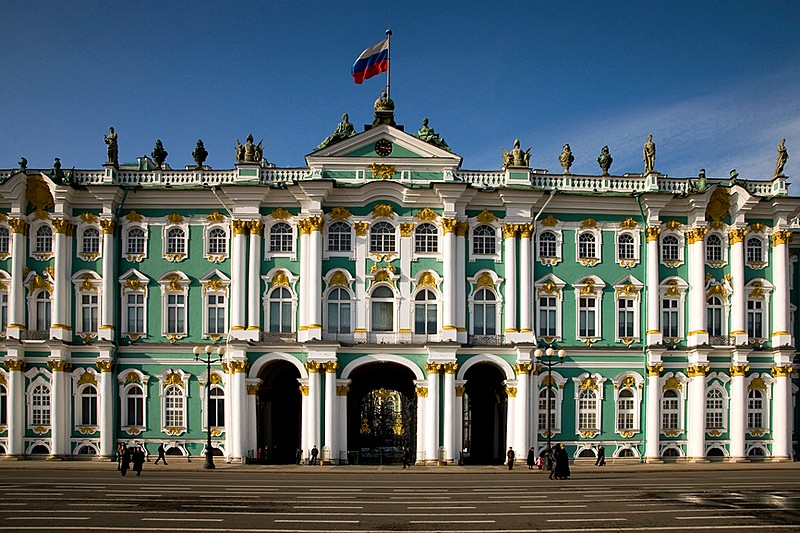
CHILDREN'S CORNER ... art craft
City Palace Museum, Rajasthan

PUZZLE
Porsche Museum in Stuttgart, Germany

QUOTE

guggenheim museum, new york city


Louvre Museum, Paris

CLEVER
Prado Museum: Madrid

EYE OPENER
thanks, patty

love knitting by angelina
1. No one really knows how old knitting is
Knitting is thought to be older than crochet, but younger than weaving. Archaeologists have difficulty determining when knitting first appeared due to the unfortunate fact that knitted fabrics tend to decay with time. Sharpened sticks that are found at dig sites might be knitting needles, or they might be tools used for completely different things. The English word for ”knitting” didn’t appear until the 14th century, and the craft was thought to have originated in the Middle East and brought west by the Crusades.
2. There is a needle craft older than knitting, but nearly identical
Nålebinding (Danish for ”binding with a needle”) only uses one needle to create this fabric which is almost indistinguishable from knitted fabric. This technique is like a hybrid of crochet and knitting, where the thread is pulled all the way through a loop, instead of having a working end in crochet. Because of this, the pieces need to be seamed together as a seamless piece of fabric is impossible.
3. Knitting was once a male only occupation
 Isn't it interesting how society changes? A craft that’s generally thought of as being ”women’s work” was once a predominately male trade. The first knitting union was founded in Paris in 1527, and you guessed it – no women allowed!
Isn't it interesting how society changes? A craft that’s generally thought of as being ”women’s work” was once a predominately male trade. The first knitting union was founded in Paris in 1527, and you guessed it – no women allowed!4. The knitting machine was invented in 1589
Invented by an English clergyman by the name of William Lee during the reign of Elizabeth I, the knitting machine changed the way we think about clothing and fabric. The business of making clothing transferred into small cottage industries, making hand knitting non-essential, a leisure activity.
5. Knitting has been considered a national duty during times of war
In many countries, the women who were left behind in times of war were tasked with picking up where the men left off. Their jobs included making air crafts, weapons, farming, and more; they were also charged with the duty to knit socks, hats, and scarves for the soldiers that were stationed in cold places. Some families sent knitted garments straight to their soldiers, but many knit for any and all soldiers who needed a bit of warmth.
6. Knitting is healthy
Again and again, studies have proved that knitting reduces blood pressure, decreases heart rate, and has innumerable benefits for mental health as a whole. Knitting spurs a relaxation response by the body, which can help deter illness.
7. For the first 400 years of knitting, wool wasn’t the most popular type of yarn
During the days of early knitting, wool was far from the most popular fiber to knit with – this is likely due to the lack of availability of wool outside of agricultural areas. Cotton and silk were the most popular among knitters for the first 400 – 500 years of the craft’s existence. Eventually wool became the reigning queen of the kit world, and wool farmers began to breed sheep specifically for sustainable, strong, and soft wool, like with the Merino sheep breed. The 21st century has seen a huge resurgence in plant based fibers like bamboo, linen, and cotton.
8. The first knitting pattern book was written in the 17th century
Published in 1611 by Johann Siebmacher, this book contains 126 pages of needlework and color work charts, ranging from simple repeating motifs to full, tapestry-like scenes. The graphs on many pages were painstakingly filled in by hand!
9. Early needles were made with ivory, bone, and tortoise shell
 These early needles were designed to be strong and pointed to facilitate knitting, but used materials that we might think are very strange. Today’s needles can be made with a huge range of materials, from plastic, to aluminum, to bamboo, to beautifully colored wood.
These early needles were designed to be strong and pointed to facilitate knitting, but used materials that we might think are very strange. Today’s needles can be made with a huge range of materials, from plastic, to aluminum, to bamboo, to beautifully colored wood. 10. Even Greek gods and goddesses spun and wove
Precursors to knitting, spinning and weaving are mentioned throughout oral history. One of the most well known tales is that of Arachnae, a mortal woman who was very gifted in the art of weaving (or spinning, as some versions say). She foolishly challenged the jealous goddess Athena, and after they competed, Athena cursed Arachnae with melancholy. After a time, Arachnae decided that life was too much to bear – but Athena took pity on her and let her live as a spider, so as to weave the rest of her days. Arachnae is where we get the scientific term for spider, arachnid! I’m sure many or us have a fear of these creatures, which would be called arachnophobia



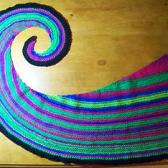
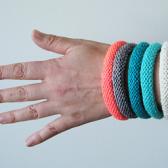
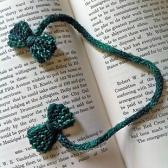

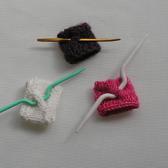

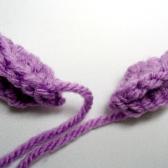
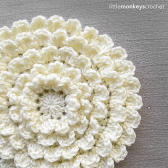













Good thing we don't have a microwave or I'd be knee-deep in caramels:)
ReplyDeleteLiked the 10 things about knitting and the origami pots for starts. I must try some of those planters next year. I have DH talked into a small greenhouse (no place in the house for plant starts unless I do something with the counter space in the laundry room/basement kitchen.
ReplyDelete